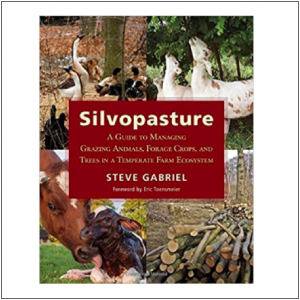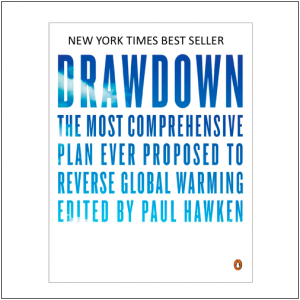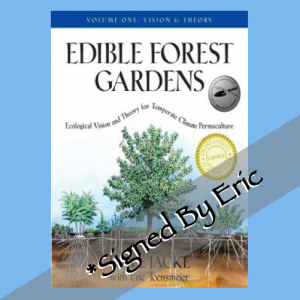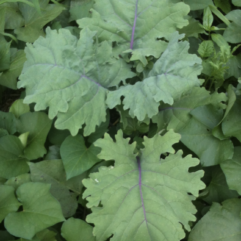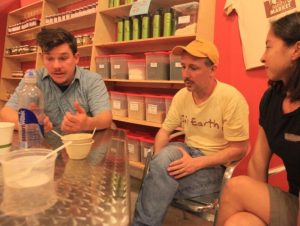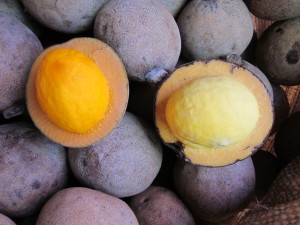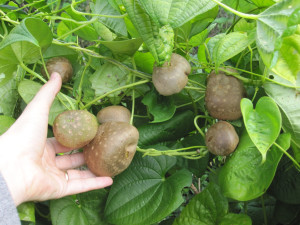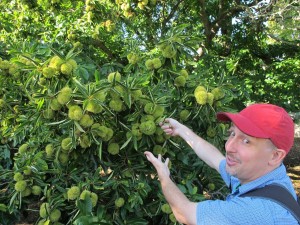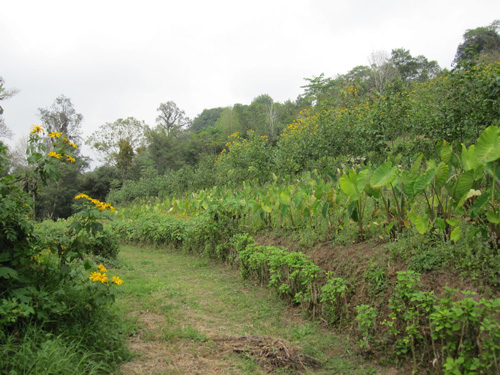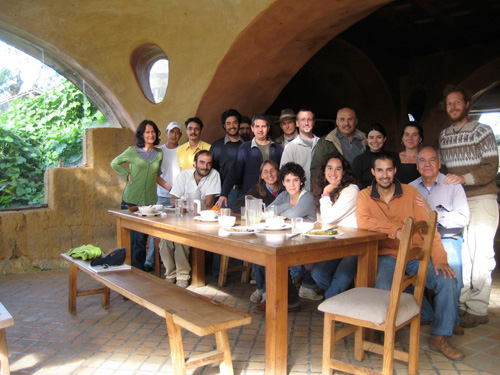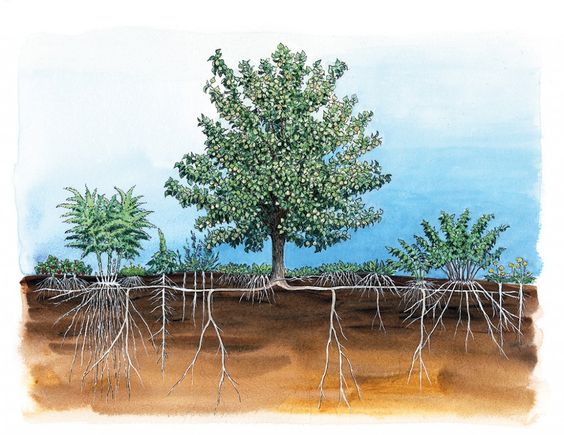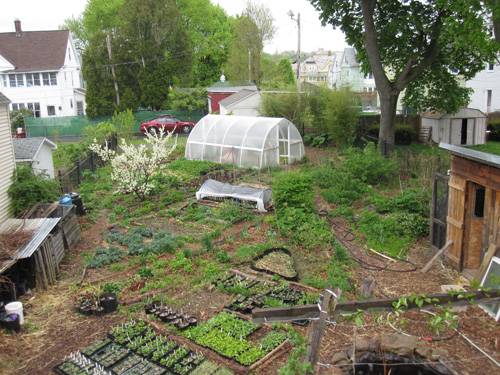Nice thoughtful review of Paradise Lot in HortIdeas:
HORTIDEAS, March 2013, 30(3)
BOOK & DVD REVIEW
Paradise Lot: Two Plant Geeks, One-Tenth of an Acre and the Making of an Edible Garden Oasis in the City, by Eric Toensmeier with contributions by Jonathan Bates, Chelsea Green Publishing, White River Junction, VT, 2013, 234 pp., $19.95, ISBN 978-1-60358-399-2.
Perennial Vegetable Gardening with Eric Toensmeier, 143-minute DVD, Chel- sea Green Publishing, White River Junction, VT, 2012, $29.95, ISBN 978-1- 60358-369-5.
We aren’t exaggerating when we say we’ve been looking forward to reading Paradise Lot more than any other gardening book we can remember. At last, we hoped, it would provide documented results, over a period of several years, of a highly motivated attempt to create and maintain a temperate-zone garden with an emphasis on perennial polycultures. (The book’s authors have no qualms about labeling their approach “Permaculture.”) The location is an tenth-acre urban lot in Holyoke, Massachusetts, and the gardeners have backgrounds in what has been publicized as “forest gardening” or “farming in the image of the [natural] forest.” Actually, we think that the Holyoke garden would be better labeled as “old-field gardening” to avoid the enticing yet misleading vision of mimicking an old-growth forest–after all, the main point of it is to yield food, not inedible biomass, although ecosystem services such as moderating pest outbreaks and recycling nutrients supposed to be given some consideration as well.
Most important to us is that, as far as we know, nobody else has reported in anywhere near the detail of Paradise Lot on their experiences with temperate-zone perennial polycultures. Despite a large body of theoretical claims about the advantages of this kind of gardening, until now empirical data on it have been few and far between. Because our own experiences with perennial edibles here in Kentucky have been mixed (to say the least), we have been skeptical about the purported advantages, both in terms of food yields per time and resource inputs, and in terms of ecological benefits, of perennial polycultures versus more conventional gardening almost exclusively with annuals in temperate areas. Of course, our skepticism is nearly as theoretical as the wild-sounding–at least to us–claims of some perennial polyculture advocates that it should be possible, even in temperate areas, simply to install various edible perennials and then do essentially nothing except harvest from them.
Hence our enormous interest in Paradise Lot. After having read it (and especially after having watched the Perennial Vegetable Gardening DVD, which shows many of the plants growing in the Holyoke garden a number of years after its establishment), we have tremendous admiration for the energy, knowledge, and, particularly, candor of Eric and Jonathan. They have truly “been there and done that.” Been where? Gathering edible perennials from far and wide, perusing the horticultural and ecological literature for ideas, and seeking to learn from like-minded “plant geeks” whenever possible. Done what? Planting a huge variety of edible perennials, finding out how to make use of them, and winnowing out those found to be lacking. The book shows very clearly the difference between assuming that something “theoretically should work” and the typically much harder showing whether or not it actually works in practice. Eric and Jonathan have spent a lot more time showing than assuming, and we think they deserve to serve as models for all who are interested in improving horticultural techniques.
That’s not to say we found no disappointments in Paradise Lot. The biggest disappointment is that the experimentation that sets this book apart from previous empirically unsupported theorizing does not go beyond the “preliminary research” stage. Preliminary research done by professional investigators is done prior to rigorously controlled research to establish the parameters most likely to be fruitfully investigated rigorously.
For example, preliminary research might involve looking for variations in results when a particular factor (such as the application rate of a fertilizer or pesticide) is varied over a wide range; if the factor of interest doesn’t change much for certain ranges of application rates, then those ranges are avoided in the rigorous research. More to the point with the Holyoke garden experiment, the preliminary research consisted of identification of particular edible perennial species that (for various reasons determined by Eric and Jonathan) did or did not appear to show considerable worth. Once such identification had been made (and the book provides many examples), the next step would be to characterize the desirable and undesirable characteristics of the most promising species in considerable detail at various locations. This step was not taken, in part for reasons that do not reflect at all on the scientific abilities or attitudes of the experimenters–after all, they have no foundation or corporate subsidies and integrate their work into their lives–in part (a good part!), Paradise Lot is a love story! We are only pointing out that the work described in Paradise Lot is just a first (and quite admirable) step toward characterizing and optimizing the use of “new” perennial edibles in temperate gardens.
[Note – the Apios Institute is our (still forming) effort to do just that]
There is a second, even more important (in our opinion) step that needs to be taken, building on the results presented in Paradise Lot. Lacking in the Holyoke garden, again in part for understandable and forgivable reasons, are controls. In particular, there is no way to compare work inputs and yield outputs between the garden’s perennial polyculture and annual food plants. Eric and Jonathan did not set out to make such comparisons–but we are concerned that some readers of their book will jump to the conclusion that the results, without controlled comparisons, can be taken as vindicating the superiority in some sense of perennials over annuals for temperate-zone food production. Some of the blurbs on the back cover and at the beginning of the book have an aura of jumping to such a conclusion in the absence of sufficient evidence. Farmer-writer Gene Logsdon, for example, writes as follows:
The authors … have raised 400 pounds of perennial fruits and vegetables … per year in this tiny garden…. here is proof positive that with proper knowledge and will there is no such thing as food scarcity.
The still-open question, we believe, is whether such “proper knowledge” (for temperate-zone gardeners) should privilege edible perennials (and, if so, which ones, and how best to grow them). In the November-December 2010 HortIdeas (page 123), we noted that the web site www.verticalveg.org.uk reported a yield of more than 140 pounds of (presumably annual) vegetables on a six-foot by nine-foot balcony, in six window sills, and on a small patio in England–almost certainly a considerably higher yield per square foot than reported from the Holyoke garden several years after its establishment. There remain questions about ecological impacts as well as food yields of perennials–only bare hints of preliminary research on the former (particularly with regard to weediness) are presented in the book. And a considerable but not quantitatively assessed nutrient supply for the garden comes from materials imported from outside the garden.
In sum, we think Paradise Lot is an extremely important book, and we hope that it gains a following for the contribution it actually makes, rather than for what it doesn’t (such as proving that perennial polycultures make sense for gardeners in the temperate zone). This book is just the start of what we suspect will be a long but very interesting research endeavor.
One technical issue: the DVD promises inclusion of a “searchable database of perennial vegetables” (PDF file), but there is no such file accessible using any of our (Windows XP) computers. Perhaps Chelsea Green could make the file available as a download for purchasers of the DVD?
[NOTE – the database is downloadable at the Chelsea Green page for the DVD, and here on my blog.]

